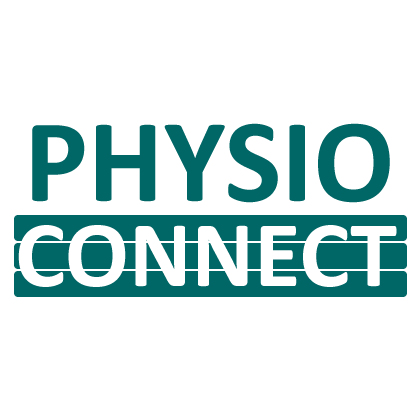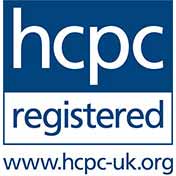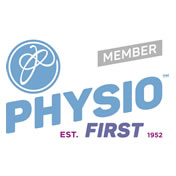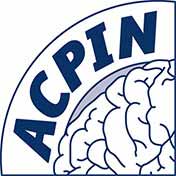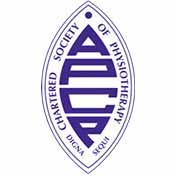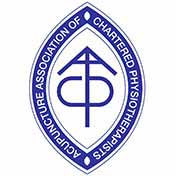Back problems are the nation's largest cause of sickness absence and one of the most common musculoskeletal complaints. Though back pain is a generic term, affecting most people at one or more times in their lives, there are many underlying causes and the symptoms can vary hugely, being dependent upon the source of the pain, its pattern and history of onset.
Postural back pain
Symptoms seem to come on very gradually, with no specific injury leading to the onset of pain. It can begin as a small, localised ache, but can progress to widespread aching throughout the whole of the back, even as far as the neck. Pain begins as a result of fatigue and inflammation within overactive, over-tense muscle groups and ligament complexes, due to poor and often repetitive or prolonged postures place abnormal demands on these soft tissue systems. A good example of this would be a primary school teacher, who finds themself leaning over talking to small children for many hours on a daily basis. This would lead to an abnormal posture of the spine, put strain through muscles and ligaments within the back, place abnormal loading through the spinal discs, and possibly also the small joints (facet joints) of the back. Other examples could include incorrect desk set-up and seating at work, prolonged standing up to counters in poor positions, or long distance driving etc.
A simple enough concept to teach, good posture is important in maintaining a pain-free spine, but all too often this is disregarded and poor habits are formed.
 An experienced physiotherapist can assess the posture of an individual as a whole and correct this as necessary with education and hands-on facilitation. Advice can also be given regarding correct desk set-up and seating (ergonomics), appropriate manual handling at work and the use of items such as lumbar rolls etc. Physiotherapy treatment can also then address the tight muscles, soft tissues and joints that have become painful, using manual therapy techniques, deep tissue massage and if indicated, acupuncture. Your physiotherapist can then teach you how to work and strengthen the muscles that help support the spine and maintain good posture, through core stability work, (much like pilates), which is specific to your individual body's needs.
An experienced physiotherapist can assess the posture of an individual as a whole and correct this as necessary with education and hands-on facilitation. Advice can also be given regarding correct desk set-up and seating (ergonomics), appropriate manual handling at work and the use of items such as lumbar rolls etc. Physiotherapy treatment can also then address the tight muscles, soft tissues and joints that have become painful, using manual therapy techniques, deep tissue massage and if indicated, acupuncture. Your physiotherapist can then teach you how to work and strengthen the muscles that help support the spine and maintain good posture, through core stability work, (much like pilates), which is specific to your individual body's needs.
It is important to be aware that should you present with pain or altered sensation into both legs, numbness between your legs, uncontrolled gait, night sweats, severe night pain, unexplained weight loss, altered bladder or bowel problems which are associated with your back problem, or should you feel generally unwell alongside your back problem, you must see your GP immediately.
Disc prolapses ('slipped discs')
As scary as this term sounds, disc prolapses are not necessarily serious, and indeed, if scanned, a large proportion of the population is likely to have some degree of disc prolapse, but they do not present with any symptoms and are therefore are unaware of a problem.
The discs in the spine can be pictured as jelly-filled cushions, sitting between each vertebra, providing cushioning and support to the spinal column, and facilitating normal spinal movement. They act very much like the cartilage of the knee, and therefore when they wear or become compromised, movement in that area of the spine changes and the joints and surrounding soft tissues, including the nerve roots can become irritated.
As a person bends and moves their spine, the discs respond at the various spinous levels to this movement, and therefore the 'jelly-like' contents of the disc move around accordingly. For example, when the spine 'flexes' (bends forward), the disc contents become squeezed backwards against their outer shell. As the spine is then straightened, the disc contents move back to be more evenly distributed within the whole disc once again. This is a normal occurrence, and is happening every time we move. However, on occasions the disc contents remain in their 'squeezed' position, thus creating a bulge, or prolapse. This can occur when a person suddenly flexes the spine, repeatedly holds their spine in a flexed position, slumps into a flexed posture for prolonged periods at their desk or when sitting, or bends down to lift a heavy load. Pain can be instant, or may come on as a gradual ache as this happens. Depending upon the degree of the disc bulge, pain may be localised to a small area of the back, or can spread ('refer') into the buttock, the front of the hip, and sometimes down the leg even as far as the foot. Referred pain occurs when the disc bulge is substantial enough to press on the nerve root next to it and pain can present anywhere down the length of the leg, with or without pins and needles or numbness. This condition is commonly termed a 'trapped nerve' and can result in 'sciatica' which is effectively a way of describing irritation of the sciatic nerve.
The good news is that, more often than not, a disc prolapse can be managed fully and effectively by physiotherapy, through exercises and manual therapy techniques, along with education about lifestyle and avoidance of the movements that initially caused or may aggravate the problem. Only occasionally, disc bulges are too significant to 'reduce' with physiotherapy intervention, and these cases may require a surgical referral.
It is important to be aware that should you present with pain or altered sensation into both legs, numbness between your legs, uncontrolled gait, night sweats, severe night pain, unexplained weight loss, altered bladder or bowel problems which are associated with your back problem, or should you feel generally unwell alongside your back problem, you must see your GP immediately.
Non-specific back pain
You may feel that there is no apparent reason why your back has begun to be painful. You have no injury to report and you consider yourself to have reasonable posture and spinal movement habits. However, there are a number of reasons why an individual may find they develop back pain, or indeed suffer from recurring back pain, despite always seeming to maintain a good posture and lift correctly etc. For example, a spine with reduced or poor muscle support, may present with inadequate control of the back during movement. Lack of appropriate muscle control of the spinal column can lead to irritation of the joints of the spine, their associated ligaments, discs and nerve roots. In addition, other muscle groups may try to compensate for this and in turn may become aggravated through overuse and over-activity.
Such unexplained back pain can be confusing and worrying for individuals, but can often be dealt with successfully once the correct muscles are trained in the appropriate manner and normal movement is restored, under instruction from a suitably experienced physiotherapist. Following analysis of the movement of an individual's spine, assessment of the muscle activity and a 'hands-on' assessment of the mobility of the soft tissues and joints of the back, your physiotherapist can issue a specific exercise programme to help with this problem. This may include 'hands-on' soft tissue work and manual therapy techniques to address stiffness of the spinal joints and overly tight muscles, in conjunction with a 'core-stability' programme in order to train the correct muscle groups appropriately.
It is important to be aware that should you present with pain or altered sensation into both legs, numbness between your legs, uncontrolled gait, night sweats, severe night pain, unexplained weight loss, altered bladder or bowel problems which are associated with your back problem, or should you feel generally unwell alongside your back problem, you must see your GP immediately.
Sciatica / 'trapped nerve'
This is a well-known term, but sometimes it is less clear as to why or how it has come about. It is not always a term that is used correctly to describe an individual's problem.
Sciatica is essentially any irritation, aggravation or compression of the sciatic nerve, which causes pain somewhere along the length of that nerve. The sciatic nerve originates from both sides of lower lumbar spinal levels (technically L4-5 and S1) as nerve 'roots', and continues through the buttocks, down the back of the thighs, into the back and outer portion of the lower legs and into the outside border of each foot. Pain and/or altered sensation are often the symptoms reported by an individual with sciatica, and this can be felt at any point down the length of the nerve. Back pain is not always present, nor is buttock pain, but the source of the nerve irritation is often at the nerve root. This means that pain can be felt into the back of the thigh, or just the lower leg, even though the cause of the nerve compression is at the nerve root. This can commonly be as a result of a prolapsed disc (see disc prolapse section above), abnormal spinal movement at the level of the nerve root, or wear and tear of the associated lumbar joints, causing reduced space for the nerve root and consequent compression. Pain is often only reported along one of the sciatic nerve pathways (i.e. often just one leg), though it is possible to have pain from both sides and therefore into both buttocks/legs.
Other causes of sciatic-type pain include a tight piriformis muscle (a deep buttock muscle overlying the sciatic nerve), lumbar spine facet joint dysfunction or sacroiliac joint dysfunction. Long term irritation of the sciatic nerve can cause reduced 'mobility' of the neural tissue, meaning that the nerve responds abnormally to normal movement, and can be aggravated by activities such as climbing stairs, walking and leaning over.
Pain which is referred down the front of the leg is not 'sciatica'. The femoral nerve is formed by the nerve roots exiting spinal levels L1-3 which then pass into the front of the leg, and therefore any nerve root compression at these spinal levels, similar to the sciatic nerve, produces pain and symptoms in these areas at the front of the hip, thigh and into the lower leg and top of the foot.
As the common reason for irritation of the sciatic (and indeed the femoral) nerve is mechanical, (in other words a component of the spine moving incorrectly), physiotherapy can be very successful in reducing and often resolving the symptoms. This may be done through postural correction, specific exercises, joint and soft tissue manual therapy techniques and neural (nerve) mobilisation.
It is important to be aware that should you present with pain or altered sensation into both legs, numbness between your legs, uncontrolled gait, night sweats, severe night pain, unexplained weight loss, altered bladder or bowel problems which are associated with your back problem, or should you feel generally unwell alongside your back problem, you must see your GP immediately.


